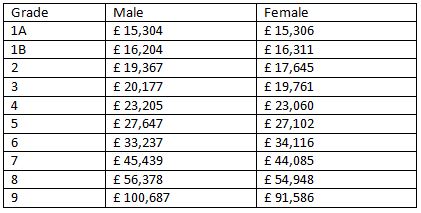All entries for September 2016
September 23, 2016
Measuring the gap
I’m really proud to be working for Warwick and that makes me a bit competitive – and the idea that we are “second worst” for something is always going to catch my eye and cause anxiety. And the whole area of diversity and inclusion is something that I have worked on for a long time, so the recent headline about the gender pay gap in our independent student newspaper, “The Boar” immediately got me worried.

The issue of gender-based differences in pay in the UK has moved on a lot since the strike by women machinists at the Ford Motor Company triggered the introduction of the Equal Pay Act in 1970 (immortalised in the movie – Made in Dagenham). Although subsequently repealed, the main provisions of the Act were retained in the 2010 Equality Act.Despite legislation and a whole raft of initiatives, there continue to be significant disparities in pay by gender (and a range of other “Protected Characteristics”).
The factors behind gender pay gaps are hugely complex which makes it hard to look at this issue from a generalist perspective - factors such as differences in education, qualifications and experience to name a few. But there is evidence of the persistence of both implicit and explicit discrimination. Labour market segmentation (more women in lower paid occupations) is one such example of indirect discrimination and a recent study by Warwick academics (using Australian data) provided evidence of direct discrimination in the form of systematically lower probabilities of women successfully requesting pay rises.
One of my roles at Warwick is the Chair of the University’s Equality and Diversity Committee, and this gave me another driver to look more closely at the UCU findings and assess them in relation to institutional practice. The Boar story claims a significant average pay gap of 18.7%. The SU says it’s very disappointed, the University says that these figures overstate the case. So let’s have a look at some figures from the University’s salary database.

I'm not saying that there is not a problem and we don’t need to address this issue but with any statistics, it is worth digging further to give context. The differences in pay between males and females are statistically insignificant in all grades except 2 and 9 (the latter being Professors, very senior Administrative and commercial staff) and small differences in either direction are primarily driven by differences in length of service. At Grade 2, the difference is entirely explained by contractual overtime paid to two groups of staff where male staff outnumber females.
At the most senior level, Grade 9, the pay gap has fallen in recent years, in part because of a rigorous programme of equality adjustment each year following the Senior Pay review (something which other institutions are also doing – including King’s and Essex). The academic pay gap at level 9 has now been corrected in two faculties and is very marginal in a third.
So why the difference between the UCU perspective and that of the University? Well, the UCU report appears to work from average figures across all grades while the figures above are disaggregated by grade. And the data above come from the University directly and is the most recent data available, while the UCU report appears to use older figures reported to the Higher Education Statistics Agency.
Putting these different data sets to one side and looking ahead, we must continue to monitor pay differentials and address any differences related to any of the protected characteristics – and not just gender. We have a high level snapshot of the current position but further, more detailed analysis would be of real value and this is something we will include on the workplan for the Equality and Diversity Committee for the coming year, alongside the commitments expressed in the “Gender Statement of Intent”.

 Execblog Resource
Execblog Resource

 Please wait - comments are loading
Please wait - comments are loading
 Loading…
Loading…